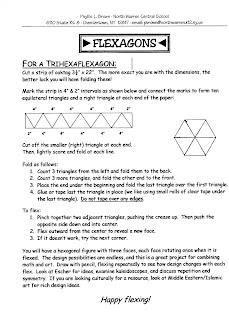Above, Dylan's happy little pig (left) and Kylie's splatter-pig fly over my desk, along with Cristina's lovely angel pig (unfortunately not photo-ed). I also don't have a photo of the Boston Celtics pig, complete with sweatband on head, or the rodeo pig with its lasso.
So the flying pigs are mostly done; 25 of them are currently 'flying' in my room with 8 more to complete. The unfinished pigs include a clown pig, and a sweet girl piggie with lace and ruffles and bows. Next week, several pigs are going to the public library to fly through the children's room for a few weeks. Here's a view of my art room:

Above is Cordell's devil pig, and Summer's angel pig.
Chloe's chef pig (complete with fried egg) and Delilah's pig.
Trey's "ninja superhero pig" is situated over the radiator vents, so that his cape constantly blows in the breeze.
Kylee and Olivia's two happy piggies
Quinn's red, white & blue pig with star wings
Xavier's pig (wish you could see it's cute smile)
Mason and Jay's army pigs (note the "bomb" - a pipe cleaner and button - hanging from the pig on the right)
I think the pigs came out pretty cute, but I had trouble convincing the kids of how I wanted them finished. I told them that eyes close together look goofy and cute, but most simply didn't want them that way. They could have added eyelashes, bows, belts, and more, but only a few went that far. Two of the most unique are a firefighter pig and a sheriff pig (both the dads' professions) and they have name badges and uniforms, but ironically both have earrings and glitter eye shadow. So I had to remind myself: I chose pigs as our papier-mache project this year, rather than some others that I might have done, because I KNOW THE KIDS. This year's 5th graders are sweet, nice kids, quite lovely actually, but they have trouble with multi-step directions. The pigs are easy to construct and the only real decision-making was the design of the wings and how they are painted/decorated in the end. Ironically, my 3rd graders are beginning some papier-mache masks right now, and they are decidedly more complex. Again, I know the kids. Do you adjust your lessons & projects based on the mix of kids in the class?
**I said this a couple of days ago and I'll bring it up again - is anyone else having weird spacing things going on with blogger? After all these months w/no problems, suddenly I have extra spaces jumping in, or spaces deleting, no matter how many times I try to adjust it. I don't like the way it looks but I can't seem to fix it. It's a mess! Picky, picky, huh? Are you having these problems with your blog?

















































